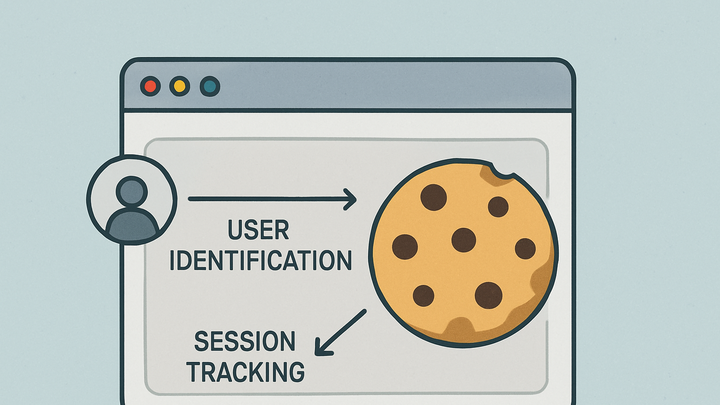Published on 2025-06-22T02:18:14Z
What is a Cookie in Web Analytics?
In web analytics, a cookie is a small data file stored on a user’s browser that helps track and remember user interactions across sessions. Cookies enable analytics platforms to distinguish unique visitors, persist user preferences, and collect behavioral data such as page views, clicks, and session duration. First-party cookies are set by the domain the user is visiting, while third-party cookies originate from external domains, often used for cross-site tracking and advertising. Recent privacy regulations like GDPR and browser restrictions have limited the use of certain cookies, prompting the rise of cookie-free analytics solutions such as PlainSignal. Modern analytics tools like Google Analytics 4 (GA4) still rely on cookies to enhance data accuracy and user recognition, although they are augmenting tracking with first-party data, signal modeling, and server-side tagging. Understanding cookies, their types, and alternatives is essential for implementing compliant and effective analytics strategies.
Cookie
A cookie is a small browser file used in web analytics to identify users, manage sessions, and collect interaction data.
Definition and Role in Analytics
Explores what cookies are and why analytics tools use them to track user behavior.
-
User identification
Cookies assign a unique identifier to each browser, allowing analytics tools to recognize returning visitors.
-
Session tracking
Cookies maintain session state, recording the sequence of pages and actions performed by a user during a visit.
Types of Cookies
Details on first-party and third-party cookies and their roles in analytics.
-
First-party cookies
Set by the domain a user is visiting, these cookies are commonly used for essential analytics functions and preference storage.
-
Third-party cookies
Provided by external domains, they enable cross-site tracking and advertising but face increasing browser restrictions.
Cookie Management in GA4
How Google Analytics 4 uses and configures cookies for tracking.
-
GA4 cookie names
GA4 sets cookies like _ga, _gid, and _gat to distinguish users, track sessions, and throttle request rates.
-
Configuring cookie settings
Within GA4, you can adjust cookie expiration, anonymize IP addresses, or deploy server-side tagging to control cookie usage.
Cookie-Free Analytics with PlainSignal
An overview of PlainSignal’s cookie-free, privacy-first approach to analytics.
-
Tracking code snippet
To implement PlainSignal on your site, include the following snippet:
-
Code example
<link rel="preconnect" href="//eu.plainsignal.com/" crossorigin /> <script defer data-do="yourwebsitedomain.com" data-id="0GQV1xmtzQQ" data-api="//eu.plainsignal.com" src="//cdn.plainsignal.com/plainsignal-min.js"></script>
-
Privacy, Consent, and Alternatives
Explores legal requirements, browser policies, and non-cookie tracking methods.
-
Gdpr and eprivacy
Under GDPR and ePrivacy regulations, websites must obtain user consent before setting non-essential cookies.
-
Browser cookie restrictions
Modern browsers like Safari and Firefox block or limit third-party cookies by default, impacting cross-site tracking.
-
Alternatives to cookies
Techniques like local storage, device fingerprinting, and first-party data modeling can supplement or replace cookies.
